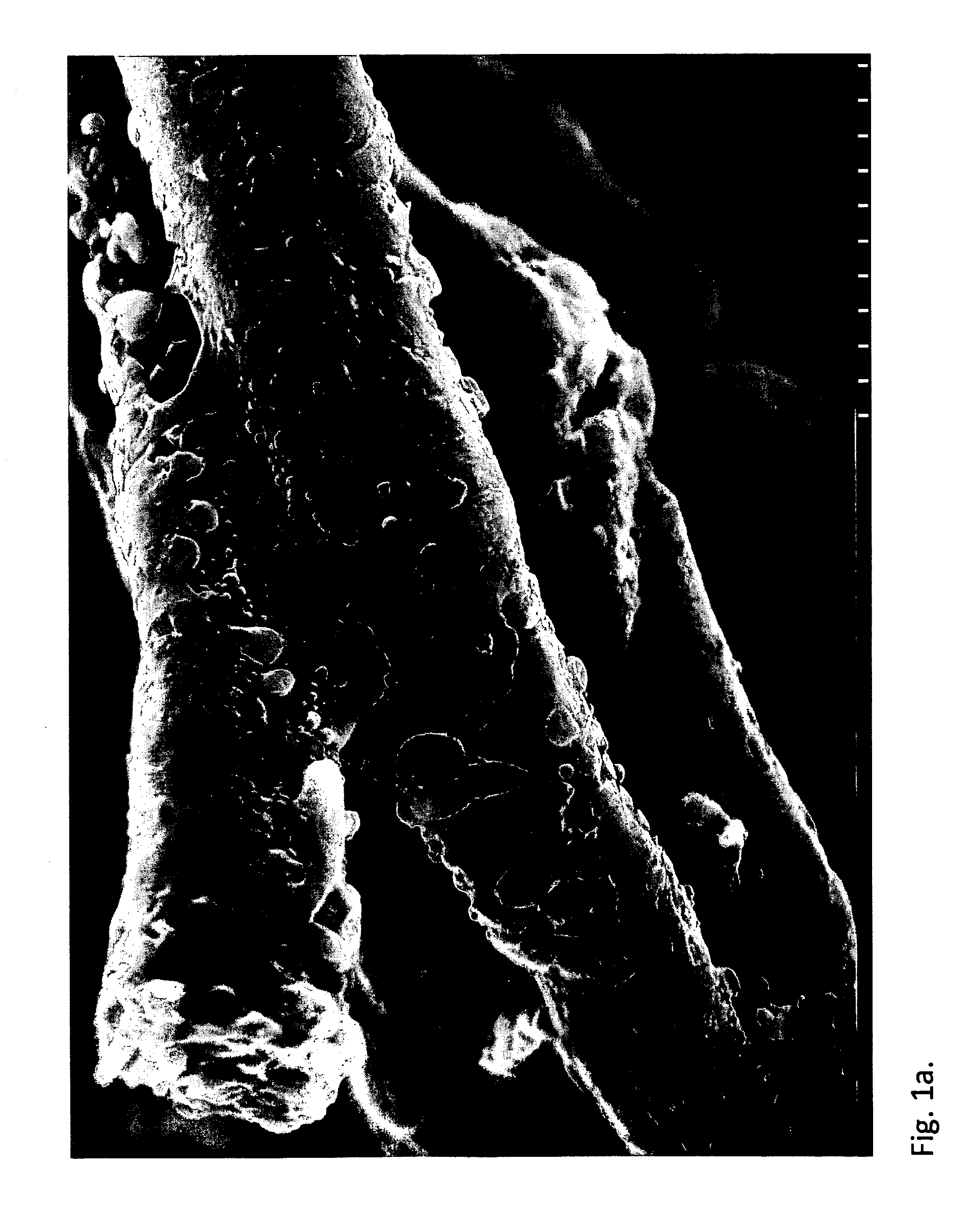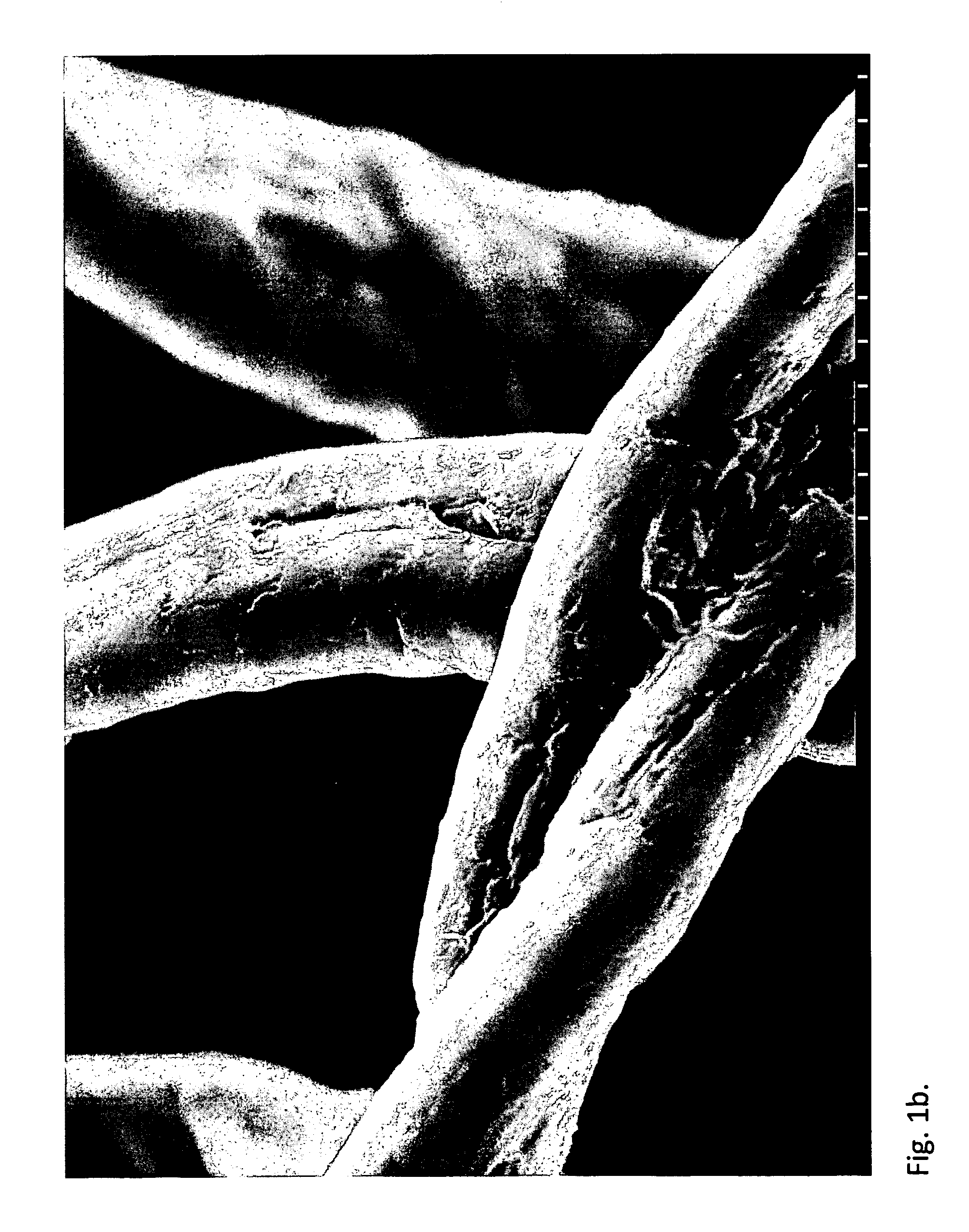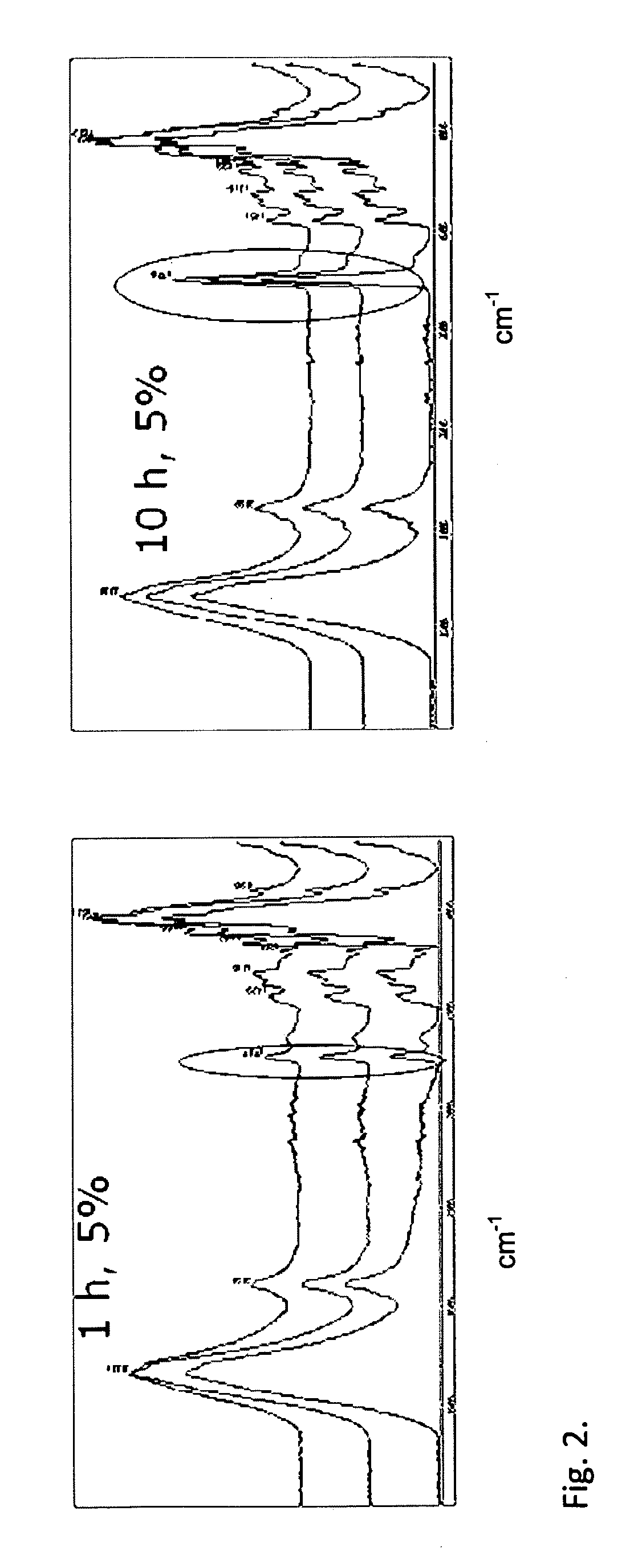Treatment of fibres to endure processing
a technology of fibres and processing, applied in the field of rigid packaging, can solve the problems of hydrophilicity and hydrophobicity of formers, and achieve the effects of increasing the availability and renewability of wood-based raw materials, improving the smoothness and plasticity, and biodegradability and friendliness to the environmen
- Summary
- Abstract
- Description
- Claims
- Application Information
AI Technical Summary
Benefits of technology
Problems solved by technology
Method used
Image
Examples
example 1
Treatment of Fibres on a Laboratory Scale
[0074]For the laboratory scale reactions, (160-190 g, 80%) D,L-lactic acid (technical grade lactic acid=LA) was used, containing 20% of water. Excess water had to be removed from the lactic acid before the reactions. The dehydration of lactic acid was carried out in a vacuum at a temperature, which was at least 140° C., stirring constantly.
Grafting of Lactic Acid to Fibres / Prepolymerization
[0075]After dehydration, catalyst (tin octoate 0.5 w / w-%) and dry pulp (10-40 g) were added into a 1 l reactor. In the reactor, lactic acid was grafted to the fibres of the pulp. In addition, monomers were bonded by a chain-extending reaction to the mono or oligomers that were already attached to the fibre. This was verified by IR spectra and SEM images for fibres, from which the fractions not attached to the fibre had been removed by the extractions and washings described in the following.
Treatment of Pulp after the Reactions
[0076...
example 2
Treatment of Fibres on a Pilot Scale
Pretreatment of Fibre
[0082]10 kg of industrial (Stora-Enso) cellulose sheets were dispersed in water into a 6% fibre suspension in a 200-liter DRAIS reactor for 30 minutes, the temperature being about 20° C. During the dispersion of the fibres, the slurry was stirred intensively by the clod crusher of the reactor. Thereafter, the fibres were filtered apart from the suspension by using a bag filter and overpressure, whereby about 20% pulp was obtained. The entire pulp was transferred to the DRAIS reactor and dried for 60 minutes in a vacuum (of at least 0.2 bar) within a temperature range of 60-100° C.
Reaction Phase
[0083]15 kg of 80% (Purac, technical LA) lactic acid were loaded into a 100-liter DRAIS reactor, and water was removed from the acid by means of under pressure (60-100° C.) within an hour. Thereafter, 75.0 g of tin octanoate were added into the reactor as the polymerization catalyst. The temperature of the reaction mixture was raised to ...
example 3
Treatment of Sheets on a Laboratory Scale
Example 3.1
Two-Phase Reaction, Softening of the Sheet
[0086]2.4 g of 90% lactic acid were added to a weighed birch cellulose sheet of 1.6 g. The sample was heated at 125° C. for 120 minutes. As a result, a softened cellulose sheet was obtained, its mass 2.2 g referring that 0.6 g of lactic acid was grafted to the fibres. The conversion is thus 25%.
PUM
| Property | Measurement | Unit |
|---|---|---|
| temperature | aaaaa | aaaaa |
| temperature | aaaaa | aaaaa |
| diameters | aaaaa | aaaaa |
Abstract
Description
Claims
Application Information
 Login to View More
Login to View More - R&D
- Intellectual Property
- Life Sciences
- Materials
- Tech Scout
- Unparalleled Data Quality
- Higher Quality Content
- 60% Fewer Hallucinations
Browse by: Latest US Patents, China's latest patents, Technical Efficacy Thesaurus, Application Domain, Technology Topic, Popular Technical Reports.
© 2025 PatSnap. All rights reserved.Legal|Privacy policy|Modern Slavery Act Transparency Statement|Sitemap|About US| Contact US: help@patsnap.com



